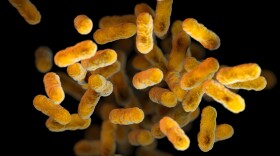Tests of the Buckeye State’s wastewater show COVID-19 may have been spreading just as Northeast Ohioans gathered for the holidays.
Public health officials have found "high" or "very high" levels COVID-19 viral activity in sewage at 15 Northeast Ohio wastewater treatment facilities, indicating that the virus was going around in the weeks before the winter holidays.
Wastewater testing sites in Carroll, Lorain, Medina, Portage and Sandusky counties showed “very high” levels of COVID-19 viral activity for the week ending Dec. 14, according to the U.S. Centers for Disease Control and Prevention.
Water treatment plants in Erie, Huron, Mahoning, Richland, Stark, Summit, and Tuscarawas counties showed “high” levels of the virus over the same period.
In Cuyahoga County, home to several wastewater treatment facilities, tests showed "very high" levels of COVID-19 viral activity at two sites and "high" levels at a third.
State health department data shows 372 people were hospitalized with the virus and 54 in the ICU that week.
Testing sewage for infectious diseases can provide an early warning of what’s circulating even if people don’t have symptoms, the CDC says.

Across the state, the prevalence of the virus in wastewater increased from the "low" to the "high" level in the first two weeks of December, according to the CDC. COVID-19 viral activity in Ohio on average was higher than in the rest of the Midwest and the U.S.
Public health officials are urging people to protect themselves against viral infections, as wastewater testing also shows the flu and Respiratory Syncytial Virus, or RSV, were circulating in Northeast Ohio as well.
Sewage testing showed “very high” levels of RSV activity in Ashtabula, Carroll, Erie, Jefferson, Medina and Tuscarawas counties, according to the CDC.
And Ashtabula County also had “very high” levels of flu, the wastewater testing data shows.
Public health officials say staying up-to-date on your vaccines, handwashing and staying home when you’re sick can help stop the spread of these viruses.





